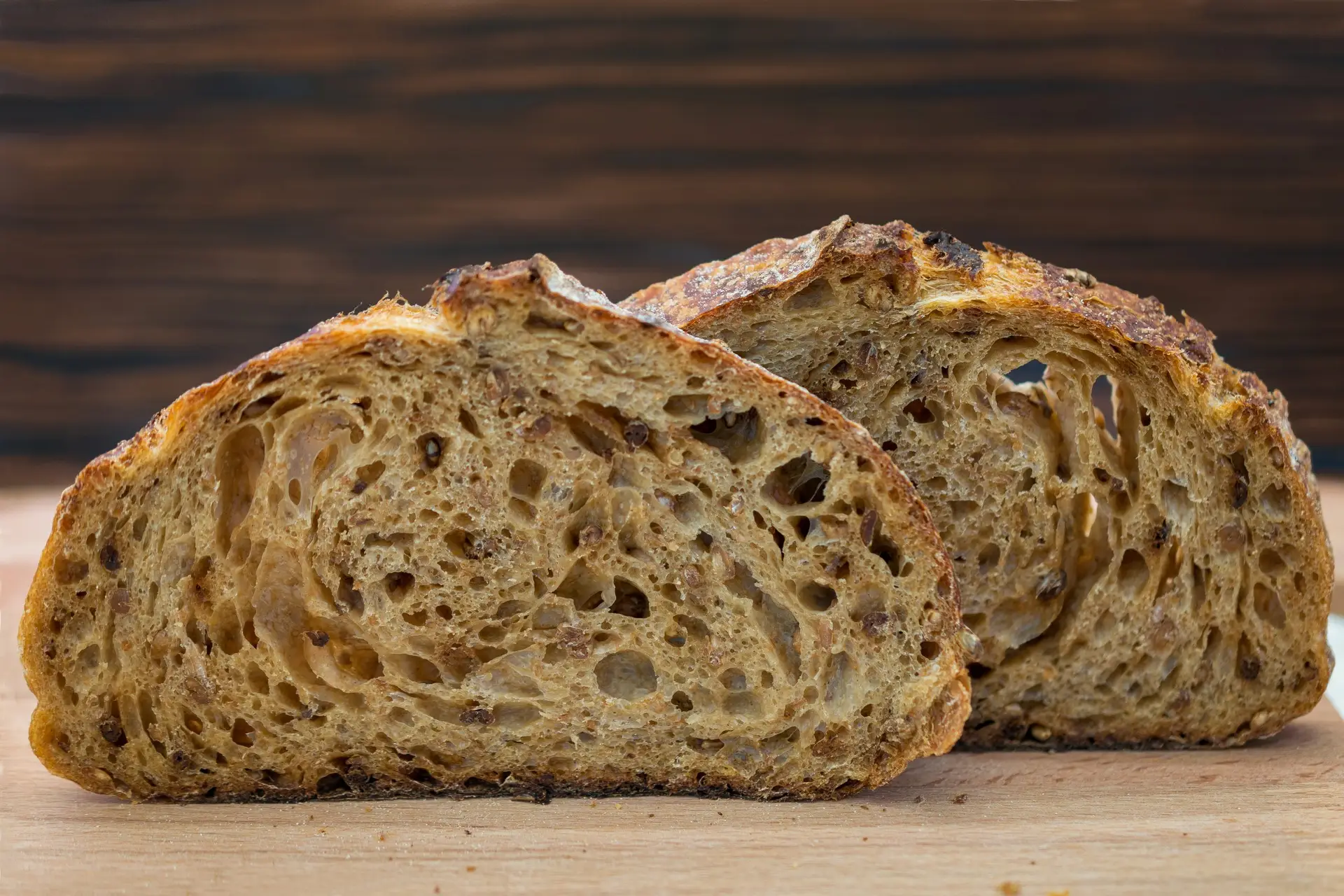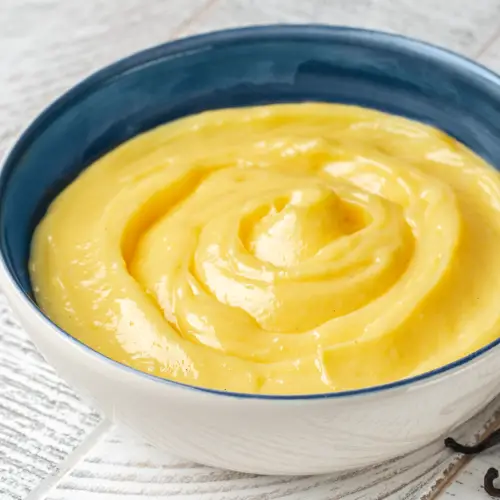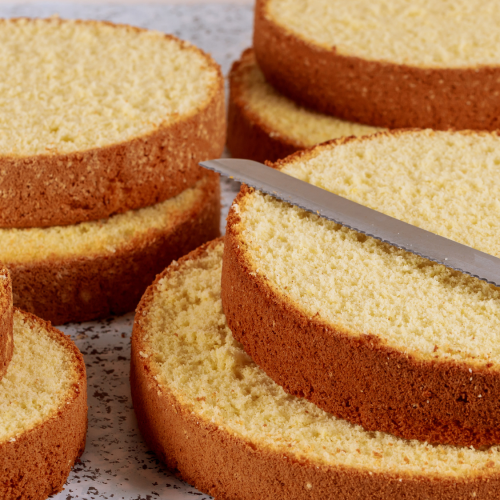TABLE OF CONTENTS
We have finally prepared our Levain from scratch. What should we do now? Once ripe, Levain can be stored in the refrigerator to make homemade bread and pizza.
HOW TO FEED The LEVAIN
Like any other Sourdough, Levain needs to be maintained and fed through refreshments.
Unlike stiff Sourdough, when feeding Levain, we will not do a bath. This is very important because I often receive messages from people who, confusing Levain and Sourdough, are used to soak it in the water before feed it. Result: all the Levain will dissolve in the water
Here is a recipe for feeding your Levain:
- 100gr of Levain
- 100gr of Bread Flour (containing 14% to 16% of proteins)
- 100gr of still water
First, pour the Levain into a bowl and add the water. Mix with a hand whisk to dissolve the starter and oxygenate it. You will notice the surface of the water will be filled with bubbles. This is very important to stimulate the reproduction of yeast cells.
At this point, add the flour and mix with a spatula until the mixture is relatively homogeneous. Stringing the dough or mixing it too much is unnecessary, so you can do this operation entirely by hand.
Once ready, pour the Levain into a pot and close the lid. Then place the pot in the fridge at +4°C (39°F) for at least 24 hours.
I recommend using a metal container for food. Unlike the glass pot, these containers will insulate the starter from light and preserve it better over time.
Depending on your availability, you can decide to refresh the Levain every day or extend the storage time to 5 to 7 days.
If you prefer to keep the Levain for more than 1 week, you will have to feed it with different proportions and decrease the amount of flour.
FOR 2 WEEKS OF STORAGE
- 1000 gr of Levain
- 250 gr of Bread Flour (containing 14% to 16% of proteins)
- 250 gr of water
FOR MORE THAN 4 WEEKS OF CONSERVATION
- 1000 gr of Levain
- 125 gr of Bread Flour (containing 14% to 16% of proteins)
- 125 gr of water
HOW TO USE LEVAIN IN YOUR RECIPES
Like Sourdough, Levain must be fed before being used in a recipe. This operation is essential to balance its acidity.
Therefore, if you need to prepare a recipe with Levain, feed it as described above. You can decide whether to feed only the quantity needed for the recipe or the whole quantity.
Keep in mind that with each refreshment, you will need to triple the amount of starter. So, if you need 300 grams of ripe Levain for the recipe, you must divide this amount by 3 to know how much Levain to feed. In this case, you will only need to feed 100 grams.
Once fed with water and flour, you have 2 options for fermenting your Levain:
- You can let it ferment for 3 hours of leavening at 30°C (86°F)
- Place it in the fridge for 24 hours at +4°C (39°F).
If you decide to feed the whole quantity you have available, once refreshed, weigh the amount needed for the recipe and ferment it for 3 hours at 30°C (86°F) or 24 hours in the fridge. Pour the remaining part in the container well cleaned and store it in the refrigerator for at least 24 hours (up to 5/7 days)
HOW MUCH LEVAIN FOR 1KG OF FLOUR
The average quantity of Levain I recommend using for 1kg of flour varies from 200gr (20%) to 1kg (100%), in case you like bread with a persistent sour note. In my experience, 250gr of Levain for 1 kg of flour is a suitable quantity, which allows you to develop an excellent aromatic note and a balanced flavor.
The leavening temperature is important in choosing how much Levain to use in the recipe. In winter, you can slightly increase the quantity (+10%) and decrease it in summer.
To make homemade bread or pizza, add Levain directly to the dough or use it to make a Biga. In this case, the amount of Biga that I recommend is about 20% of the total flour (for 1kg of flour, I will use 200gr to prepare the Biga and 800gr for the final dough)
HERE IS HOW TO PREPARE THE BIGA WITH LEVAIN
- 100gr of Bread Flour (containing 14% to 16% of proteins)
- 30gr of Ripe Levain (30% of flour weight)
- 30gr of water (30% of flour weight)
To define the correct temperature of the water and have a Biga dough at 19 °C (50°F), you can use this empirical formula:
Water T = 90 – 3x Flour Temp – Levain Temp
For example, suppose the flour’s temperature is 20°C and Levain is at +4°C; the water temperature to use in the biga dough will be 90 – 60 – 4, which is 26°C (78°F).
As for the traditional Biga, fermentation time can vary from 16 – 18 hours at 19°C (66°F), but you can extend the fermentation up to 48 hours, starting the fermentation in the refrigerator for 24 hours and then at 19°C (66°F) for the next 24 hours.
WHAT TO DO IF THE LEVAIN IS TOO ACIDIC
The high hydration of the Levain makes it naturally more acidic than Sourdough and tends to develop a higher concentration of lactic acidity. Very often, the cause of exceeding acidity is the lack of refreshments for a long time.
Recognizing the exceeding acidity of the Levain is essential. It may compromise the recipe’s final result.
Here is how you can recognize when the Levain is too acidic:
- Stinging scent
- Grayish color
- Very soft and stringy consistency
- Separation of the liquid part on the surface

I recommend removing the watery part from the surface to re-balance the starter without mixing. Then, take the inner part with a spoon and feed it with these proportions:
- 100gr of Levain
- 200gr Bread Flour (containing 14% to 16% of proteins)
- 200gr of water
Refresh the dough as described above, and once it is ready, let it ferment at 26°C – 27°C until it doubles its volume.
After the last refreshment, you can store your Levain in the refrigerator and keep it for up to 5 – 7 days as usual.







































98 comments about “Come Rinfrescare il Licoli”
Ciao, complimenti sinceri per il tuo blog e grazie mille per la tua disponibilità. Ultimamente ho notato che il mio licoli non riesce più a triplicare di volume, arrestando la propria fermentazione a poco più del raddoppio prima del collasso (mentre in precedenza, usando la medesima farina, riusciva ad arrivare fino a 4 volte il suo volume iniziale).
Per quanto riguarda le bolle di co2 presenti nel lievito sono un pò irregolari e discontinue, concentrandosi sopratutto alla base del lievito diluendosi man mano che si arriva in superficie…
a livello di odori non percepisco note particolarmente acide al naso o pungenti assaggianolo sulla punta della lingua, solo leggermente amaro.
Sto provando a rinfrescarlo in tutti i modi (anche 3 volte al giorno a 25 gradi, a volte anche aggiungendo miele) per poterlo vedere in forma come prima, ma non ho i risultati sperati. Nel migliore dei casi si ferma a poco più del raddoppio. Avresti dei consigli da darmi? Grazie ancora
Ciao Roberto,
mi fa molto piacere che Biancolievito ti piaccia!
Prova a fare 2 rinfreschi al giorno a distanza di 8 e 16 ore uno dall’altro. Per questi rinfreschi usa un rapporto licoli: farina:acqua di 1:1.8:1.8
(100gr di licoli + 100gr di farina +100gr di acqua). Una volta impastato fallo fermentare a 27°C – 30°C fino al raddoppio. Se nei primi giorni non raddoppia nei tempi stabiliti, rinfrescalo comunque.
Vedrai che in qualche giorno tornerà a crescere!
Una volta che raddoppierà in 2-3ore, il Licoli sarà pronto e da li li conserverai in frigo da 24h, fino a 5giorni
!! Non aggiungere miele ed altre cose !!
A presto!
buongiorno biancolievito perfetta spiegazione grazie mi sorge un dubbio ho letto: 250 gr di licoli su 1kg di farina è un quantitativo corretto, cosa devo fare?250 diviso 3 ed allora prendo 83 gr circa di licoli scusa ma sono imbranata ciao grazie
Ciao Mirella!
Giusto, se vuoi impastare 300gr di farina, allora potrai usare circa 85gr (250/3).
A presto!
Salve volevo chiederle se chiudo un impasto con licoli l’idratazione totale non sarà simile a quando si chiude un impasto con ldb.come scalcolare la quantità di acqua del licoli più acqua da aggiungere per arrivare all’idratazione totale decisa?
Grazie
Ciao Michele,
nell’idratazione della ricetta devi considerare anche l’acqua portata dal licoli, ovvero il 50% del suo peso (100gr di licoli aggiungono 50gr di acqua nella ricetta).
Stessa cosa anche se lo usi per la biga!
A presto!